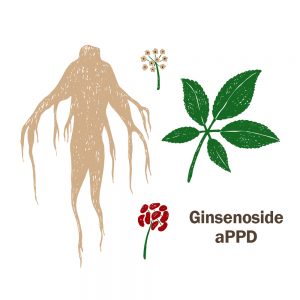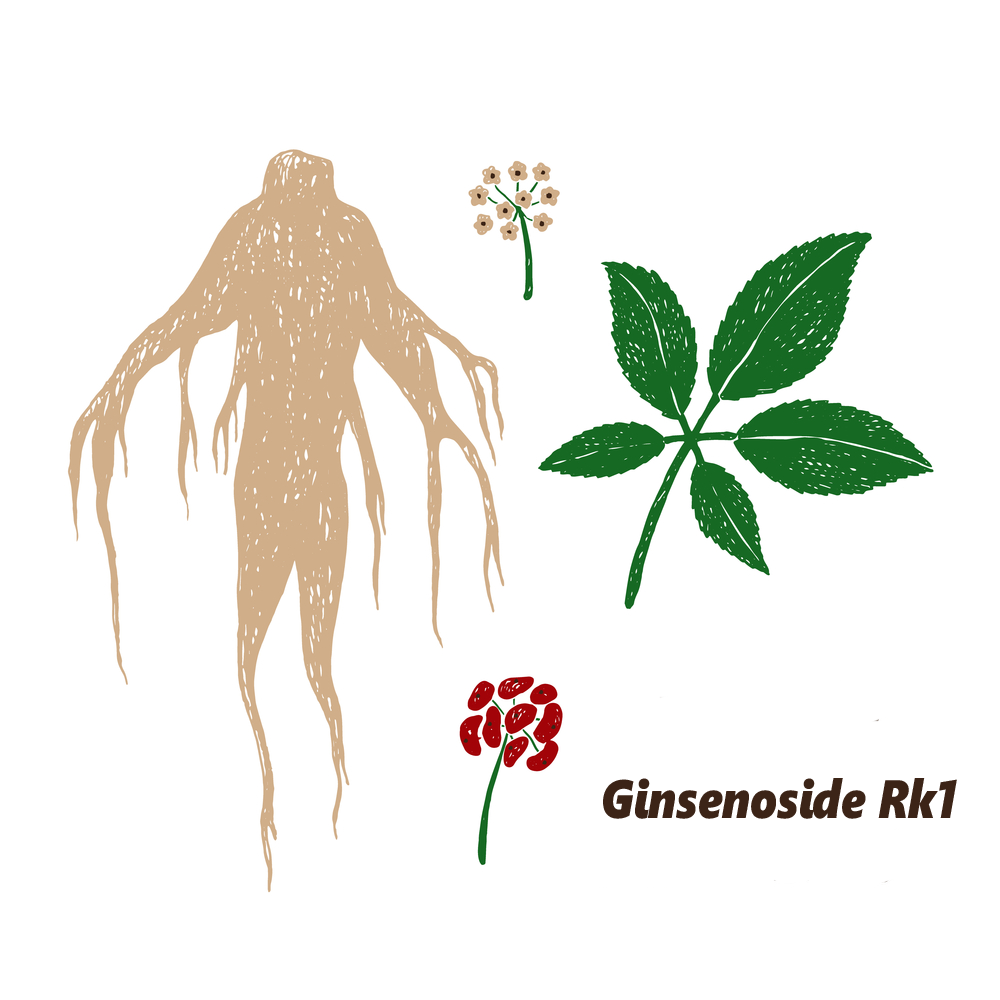Ginsenosides could be a promising EGFR inhibitor to help treat non-small cell lung cancer with an EGFR mutation
Epidermal growth factor receptor (EGFR) is a protein present on the surface of both normal cells and cancer cell and overexpression of EGFR is associated with the development of a wide variety of tumors.
It is estimated, in non-small cell lung cancer (NSCLC), that overexpression of EGFR or mutations in intracellular EGFR accounts for 43-89% of cases.
One of the methods to prevent the growth of EGFR-expressing tumors is to inhibit intracellular tyrosine kinase activity.
Epidermal growth factor receptor tyrosine kinase inhibitor (EGFR-TKI) is an effective first-line treatment currently used to treat lung cancer with EGFR mutation. Despite efficacy, it can cause side effects like rash, anorexia, nausea, diarrhea, etc, and scientists have put a huge effort into exploring better alternatives.
Ginseng is a traditional Chinese herb that has been used as a tonic to treat various ailments like colds, memory loss, and liver disease over two thousand years.

The health benefits of ginseng are attributed to its main pharmacologically active ginseng saponins, known as ginsenosides. Ginsenosides have shown to exhibit antioxidant, anti-inflammatory, antitumor, immunomodulatory activities with low toxicity.
Recent studies have indicated the potential use of ginsenoside as an EGFR inhibitor to suppress tumor growth and progression.
A study published in the journal Food and Chemical Toxicology found that 20(S)-Protopanaxadiol, known as ginsenoside aPPD, could block cell cycle progression in lung cancer cell A549 by targeting EGFR.
Ginsenoside aPPD is a metabolite of ginsenosides and shows stronger bioactivity than some well-known ginsenosides like Rh2 and Rg3.
A series of experiments were conducted to explore the antitumor activities of ginsenoside aPPD, and their related pathways. The results showed that ginsenoside aPPD significantly inhibited the activity of EGFR kinase and regulated the EGFR/Ras/Raf/MAPK pathway in A549 cells, thus blocking cell cycle progression in lung cancer cell A549. Surprisingly, researchers found that ginsenoside aPPD inhibited cell proliferation not via apoptosis but via blocking cell cycle.
The study suggested that ginsenoside aPPD can be potentially used as an EGFR TKI to treat lung cancer with an EGFR mutation.
Given that ginsenosides have well-known antitumor and antiangiogenic activities and can down-regulate the expressions of EGFR, could EGFR-TKI plus ginsenosides exert combined effects?
A study published in the journal Oncotarget revealed that EGFR-TKI plus ginsenoside Rg3 could achieve synergistic therapeutic benefits in patients with advanced non-small-cell lung cancer harboring EGFR active mutation.
Drug resistance serves as a barrier that limits the therapeutic effects of EGFR-TKI in lung cancer treatment. The researchers of the study wondered that a combination of EGFR-TKI and ginsenoside Rg3 could delay the acquired resistance of EGFR-TKI treatment.
A total of 124 patients with advanced NSCLC and EGFR active mutation were recruited and randomly assigned to group A or group B. Patients in group A were treated with EGFR-TKI plus ginsenoside Rg3 at standard doses, while individuals in group B received EGFR-TKI alone. The median follow-up period of the study lasted about 22.9 months.
The results showed the median progression-free survival was significantly longer than group A than in group B (12.4 months vs 9.9 months), despite that the median overall survival showed no statistically significant difference. Moreover, the overall response rate was significantly higher in group A.
The study concluded that ginsenoside Rg3 improved the median progression-free survival and overall response rate of first-line EGFR-TKI treatment in EGFR-mutant advanced NSCLC patients, thus providing a new regimen to delay acquired resistance of EGFR-TKI.
The increasing number of studies on ginsenosides have depicted a promising picture of ginsenosides use in cancer treatments. In some counties, ginsenosides including Rg3, Rh2, aPPD, and Rk1 have been used as an adjuvant in cancer treatment to help achieve synergistic effects.
References:
Zhang, Tiehua & Liang, Yuan & Zuo, Peng & Jing, Siyuan & Li, Tiezhu & Wang, Yongjun & Lv, Chengyu & Li, Da & Zhang, Jie & Wei, Zhengyi. (2020). 20(S)-Protopanaxadiol blocks cell cycle progression by targeting epidermal growth factor receptor. Food and Chemical Toxicology. 111017. 10.1016/j.fct.2019.111017.
Li, Yan & Wang, Yanmei & Niu, Kai & Chen, Xie-Wan & Xia, Liqin & Lu, Dingxi & Kong, Rui & Chen, Zhengtang & Duan, Yuzhong & Sun, Jianguo. (2016). Clinical benefit from EGFR-TKI plus ginsenoside Rg3 in patients with advanced non-small cell lung cancer harboring EGFR active mutation. Oncotarget. 7. 10.18632/oncotarget.12059.


